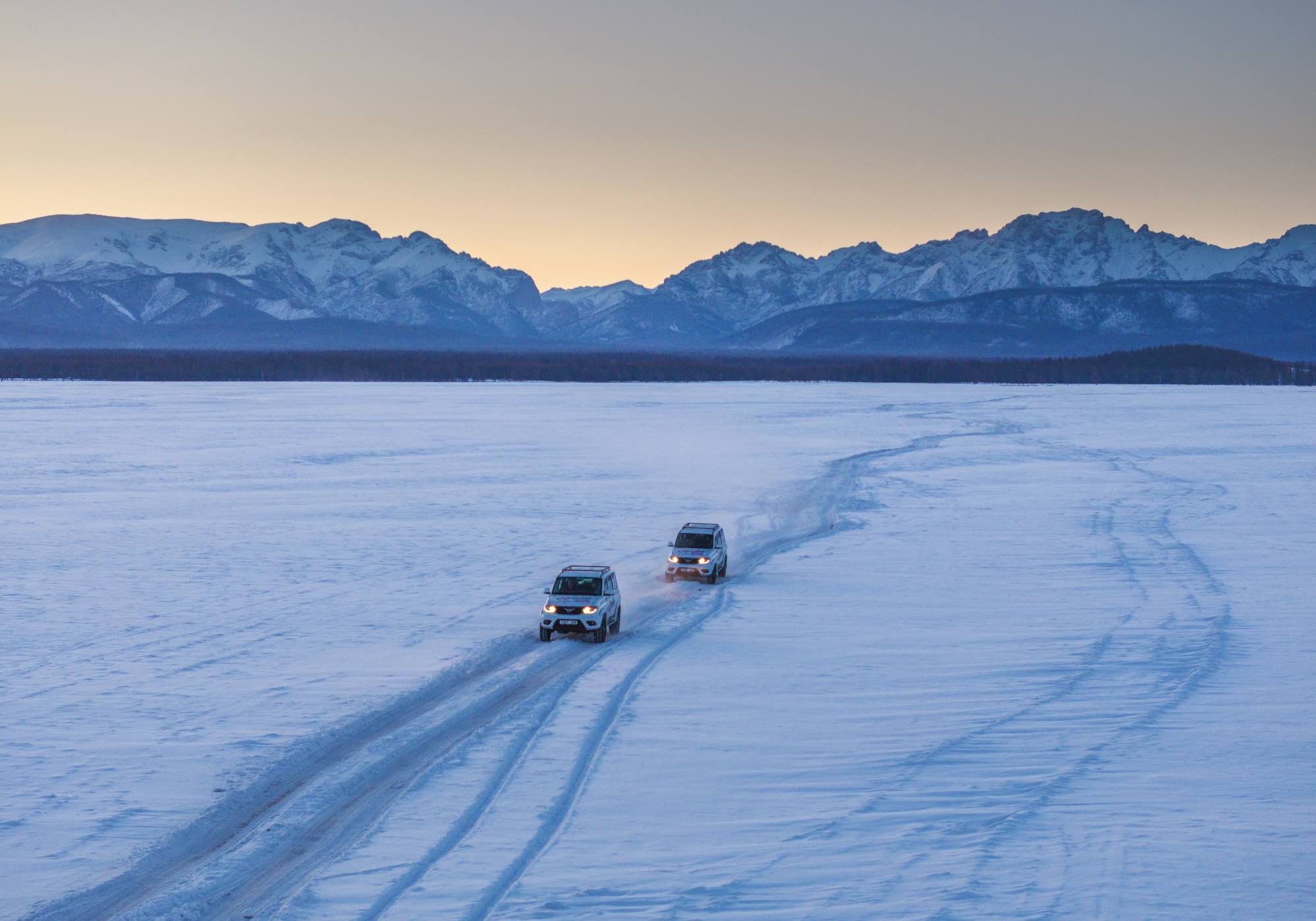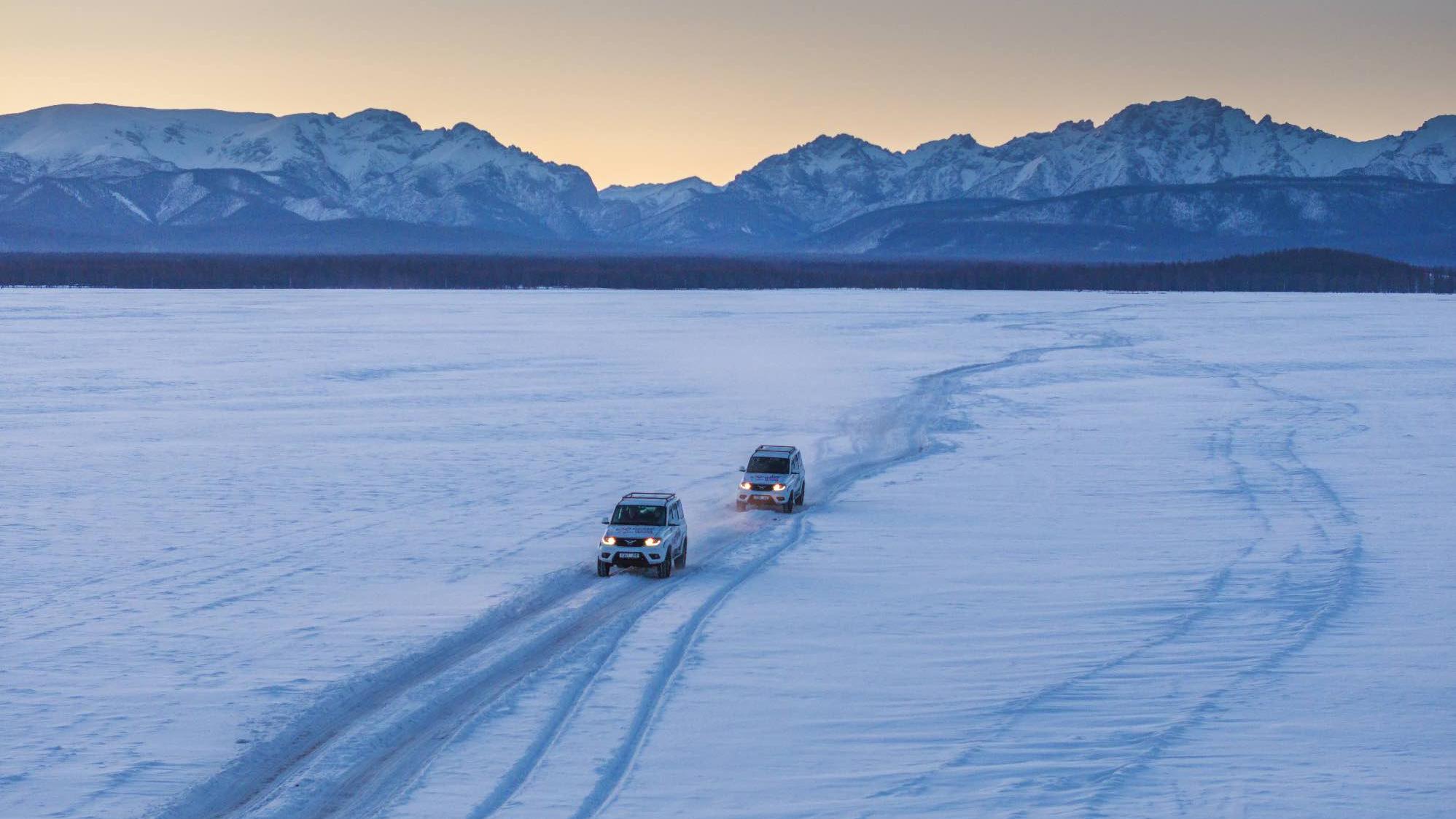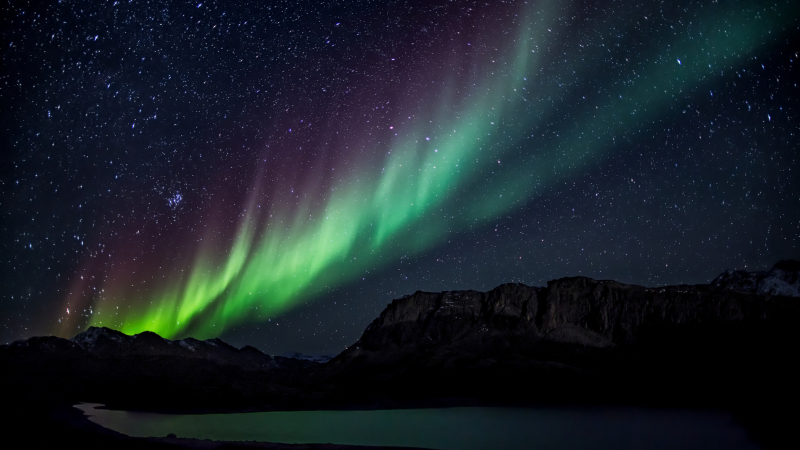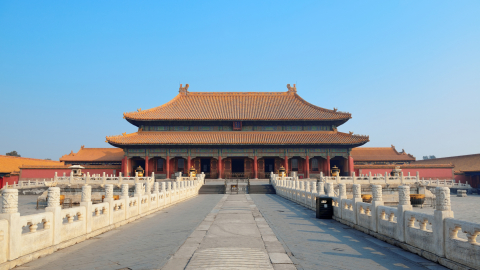Nomadic culture blends with nature
Mongolia, nicknamed “the land of endless blue skies”, is an attractive destination with its wild natural beauty and unique nomadic culture. However, winter in Mongolia brings harsh challenges, when Siberian winds blow from the north, bringing with them bone-chilling cold, pushing temperatures down to -40 degrees Celsius.
During the winter months, Mongolia is cloaked in a blanket of white, its vast steppes turning into vast seas of ice. The bitter cold not only affects the lives of the nomadic people but is also an integral part of the Mongolian identity.
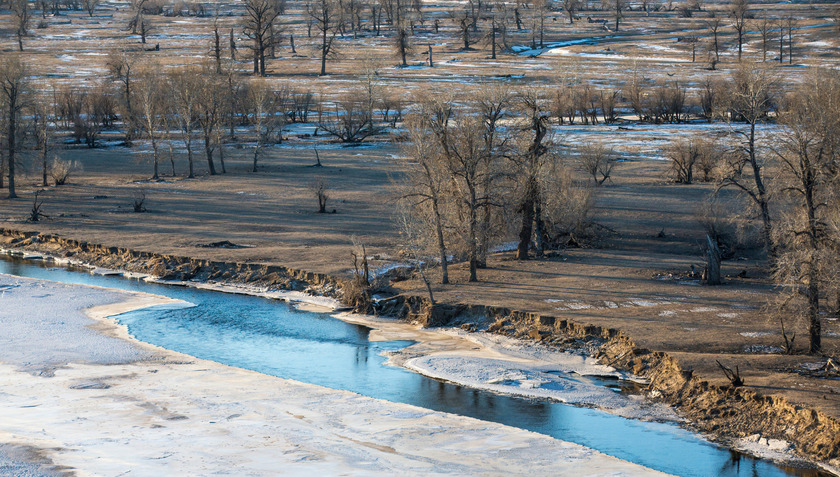
Mongolia in winter is a magical world, ice and snow cover the steppe and lakes freeze like mirrors.
However, in such harsh conditions, the Mongolian people become even more resilient and brave. They learn to adapt to nature, taking advantage of what the land and sky give them to survive and develop. Thick traditional costumes, hot dishes with rich steppe flavors, bustling winter festivals... all are proof of the optimistic spirit and love of life of the Mongolian people.
Leaving Ulaanbaatar, the bustling capital with more than 1.5 million people and busy roads, you will feel like you have just set foot on another planet. Just drive out of Mongolia's largest city, the high-rise apartment buildings and noisy factories will quickly disappear, giving way to a completely different scene: a vast desert, stretching to the horizon, where space seems quiet and time passes more slowly.
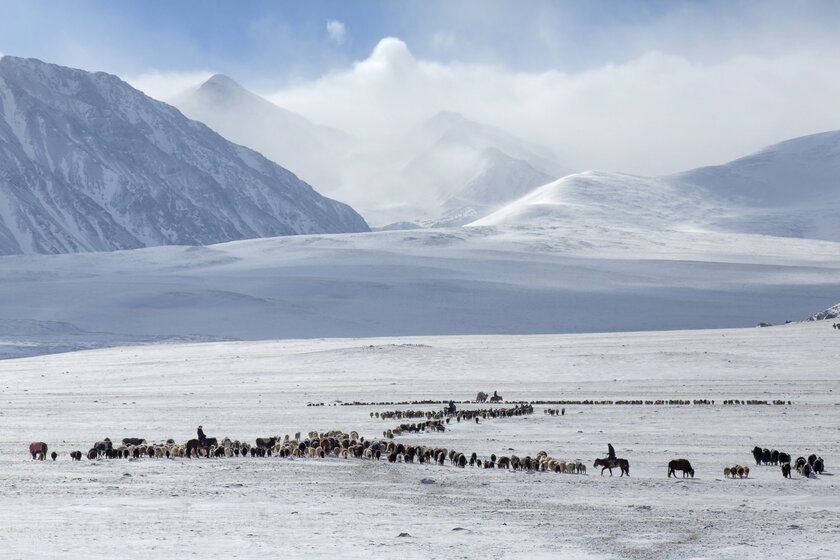
In winter, when temperatures drop and snow covers the landscape, Mongolia transforms into a different world, magical like a fairyland.
The lives of Mongolian nomadic families are a harmonious symphony between man and nature. They live a semi-nomadic lifestyle, moving with their cattle and horses to the green pastures to find food. However, they also maintain a life close to a village, where they can help each other when needed. When winter comes, when the cold winds blow from Siberia, they find a warm shelter in the valley or near a hill to pitch their tents, preparing for the harsh months ahead.
The life of Mongolian nomadic families is a harmonious symphony between man and nature. They live a “semi-nomadic” lifestyle, moving with their cattle and horses to the green pastures to find food. However, they also maintain a life near a village, where they can help each other when needed. When winter comes, when the cold winds blow from Siberia, they find a warm shelter in the valley or near a hill to pitch their tents, preparing for the harsh days ahead.
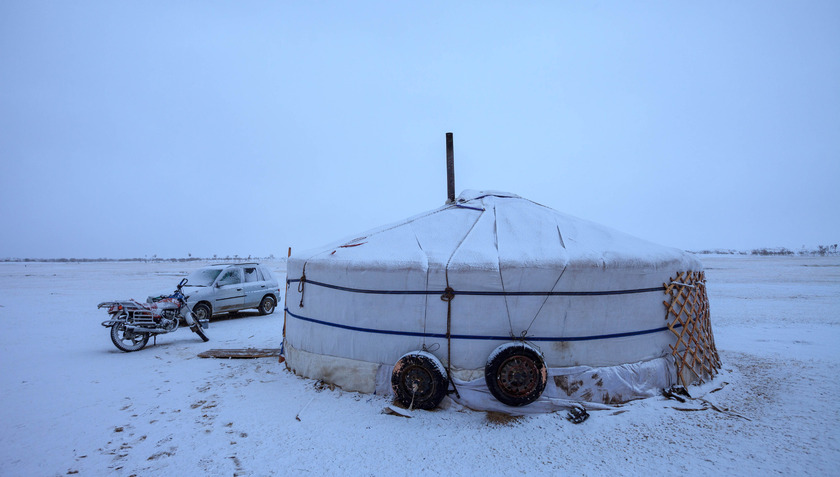
This is not only a place to explore nature but also an opportunity to immerse yourself in unique cultural festivals.
The Mongolian nomadic way of life is based on the “ger,” a circular portable home warmed by a central hearth. Gers accommodate five people and can be assembled in an hour, allowing families to move quickly and frequently as their herds seek food.
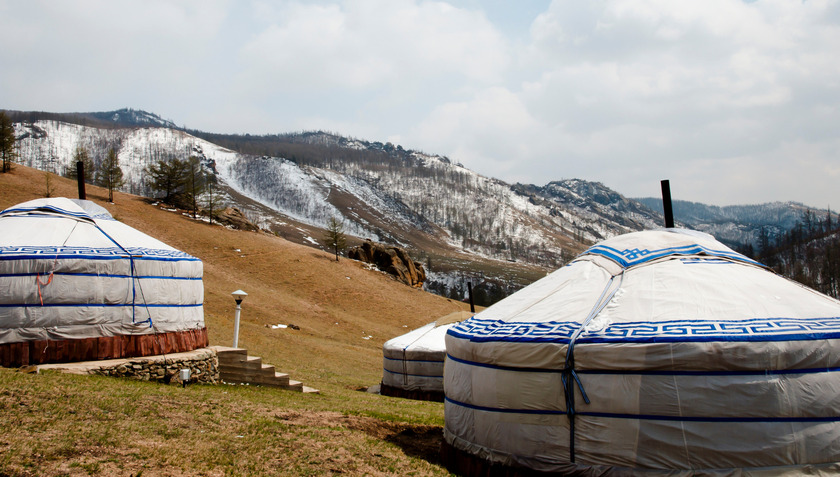
The nomadic lifestyle of the Mongols is closely associated with the “ger”
Horses are not just animals, but indispensable companions in the nomadic life of the Mongolians. They are symbols of freedom, strength and courage. Horses live in herds, freely moving across the vast steppes, not bound by fences or narrow barns. They are an inseparable part of Mongolian nature, and the people here always have a special respect for them.

Horses are associated with nomadic culture and lifestyle.
Winter Festival in Mongolia
According to SCMP, the Mongolian Winter Festival, an event held for the first time to deeply honor the long-standing nomadic culture, has been extremely vibrant and bustling throughout the past week. Amidst the majestic natural landscape covered in white snow, the festival has brought a unique cultural space, where thousand-year-old traditions are vividly and colorfully recreated. Once a year, people across Mongolia hold festivals on the ice to celebrate the end of the harsh winter.
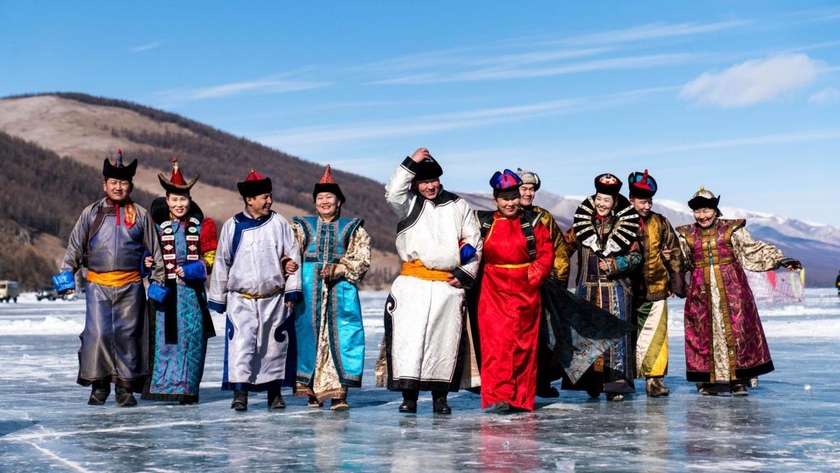
Despite the hardships they face, people still find ways to honor winter and celebrate the fact that they are still alive.
The festival lasts seven days in the harsh winter, when temperatures can drop below minus 40 degrees Celsius. This is also Mongolia's strategy to stimulate tourism, while promoting the country's unique nomadic culture to visitors.
In the cold weather, winter winds still blow around the sparkling ice sculptures as visitors tour the traditional round yurts - which showcase the cultural characteristics of different regions of Mongolia.

At the festival, visitors have the opportunity to participate in the daily activities of local people.
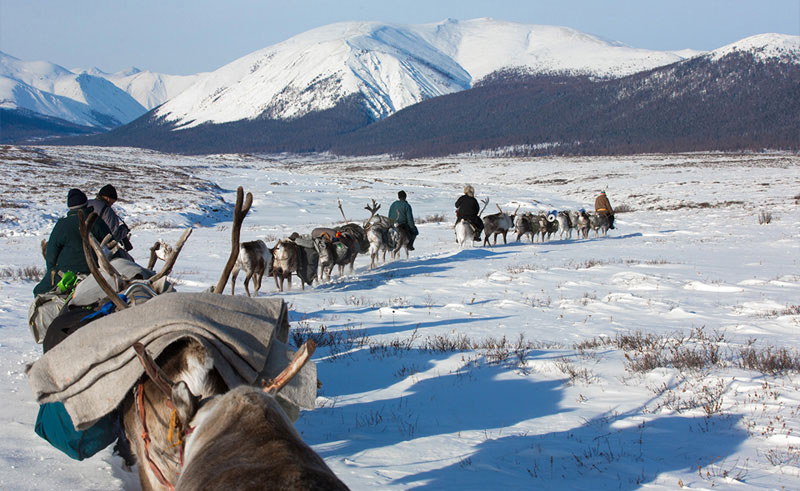
Despite the hardships, people still find ways to honor winter and celebrate their survival. In March, as spring begins, Mongolians from all over flock to Lake Khövsgöl for a two-day ice festival. Access to the area is difficult, as there are few roads, most of them rough and unmarked.
Families bring a pot of tsai (a mixture of milk, water, black or green tea and salt), a bag of khuushuur (hot fried meat dumplings) and gather together on the frozen lake to celebrate the end of the harshest time of the year.
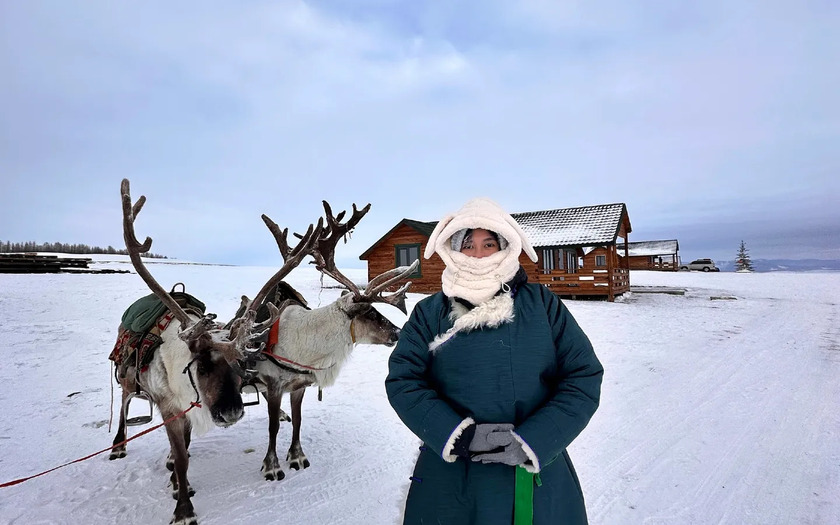
This is a rare opportunity for visitors to truly immerse themselves in the life of a nomadic community, where nature and people blend in harmony.
"There's nothing in particular that surprised me, but... it's really nice to see these traditional cultural artworks again. It's a great way to remind us how rich our culture is," said Ulaanbaatar resident Darkhan Altantsetseg.
In recent years, the Khövsgöl Ice Festival has gradually attracted the attention of international tourists. On the first day, horse-drawn sleighs run across the frozen lake, while locals and tourists compete in traditional games such as archery and tug-of-war. The second day is dedicated to larger competitions such as horse-drawn sleigh races and ice sculptures.

Coming to Mongolia in winter, you not only come to see the scenery but also to experience a completely different life.
Mongolians and visitors from different provinces, tribes, ethnicities and religions, all stay in gers around Lake Khövsgöl, celebrating and paying respect to Mother Nature for bringing them together. Despite the hardships of the winter, the mood at the festival is filled with joy.
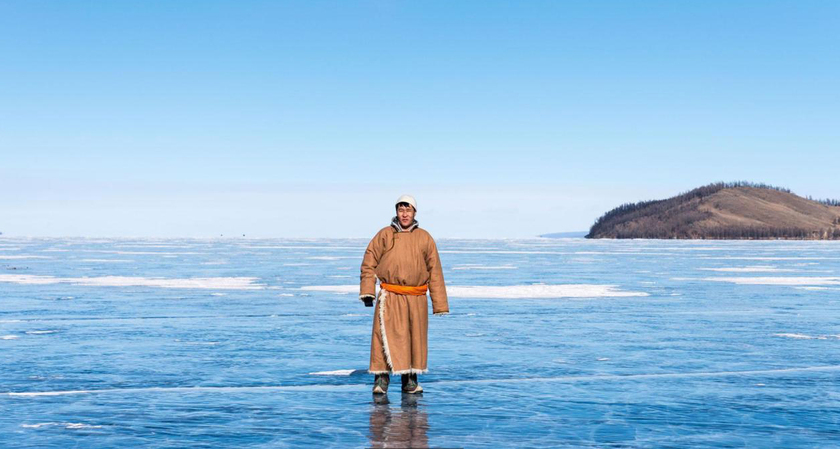
At night, before the shaman summons the crowd to the main campfire, people gather around tables set with snacks such as aaruul (dried cheese) or boortsog (fried dough).
According to World Bank figures, a quarter of Mongolia's 3.4 million people still maintain a nomadic lifestyle, but hundreds of thousands have migrated to the capital Ulaanbaatar in the past two decades, more or less reducing the maintenance of nomadic culture.
"My children were born and raised in Ulaanbaatar so they are not really familiar with nomadic traditions and culture. So this festival is a great opportunity for them to learn, I am very happy to bring them here," said Mr. Byambasure, a tourist at the festival who came here with his two daughters.





